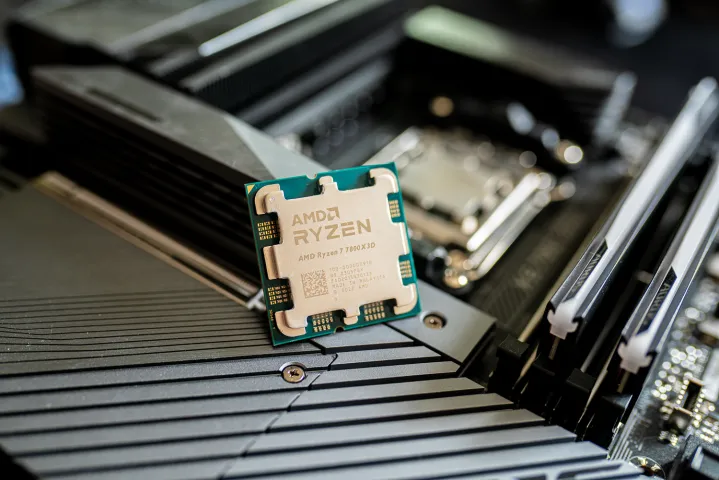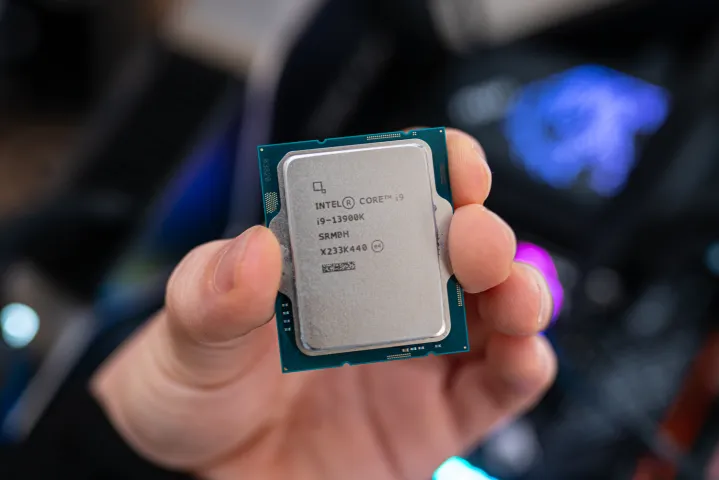5 CPUs you should buy instead of the Core Ultra 9 285K
The Core Ultra 9 285K arrived with a thud. It’s an interesting, and sometimes very impressive, processor, but it’s not necessarily a good one. Stacked up against some of the best processors, the Core Ultra 9 285K struggles in gaming and even falls behind in critical productivity apps, which isn’t a great start for Intel’s latest generation.
Thankfully, there are some excellent alternatives. I’ve reviewed just about every CPU that Intel and AMD have released in the past several generations, and I’ve rounded up five processors that match, and often beat, the Core Ultra 9 285K — sometimes even for a lower price.
Core i9-14900K

When looking for alternatives, it’s natural to point to a last-gen CPU like the Core i9-14900K. This is a unique situation, however. In the vast majority of applications I’ve tested, the Core i9-14900K handily beats the Core Ultra 9 285K. Going with a last-gen CPU in this case doesn’t just mean saving money. It also means getting a faster CPU, which is a strange change of pace compared to how we normally see new CPU generations.

Get your weekly teardown of the tech behind PC gaming
The Core Ultra 9 285K is very strong when it comes to rendering and video transcoding, but in applications like Adobe Premiere Pro and Photoshop, the Core i9-14900K is simply faster. Based on my testing, the Core i9-14900K is around 8% faster in Premiere Pro compared to the Core Ultra 9 285K. That’s a very stark jump considering creative apps like Premiere Pro leverage all of the components in your system, not solely the CPU.
In gaming, the Core i9-14900K dominates. Out of the 10 games I tested, the Core i9-14900K was faster in eight of them, and in the games were the newer Core Ultra 9 285K performed better, it was never by more than a few frames.
The Core i9-14900K would be a better alternative even if it were the same price as the Core Ultra 9 285K, but it’s actually much cheaper. At the time of writing, the CPU is $440 — nearly $200 less than what the Core Ultra 9 285K is selling for. If you want to save even more, you can pick up the Core i9-14900KF, too, which shaves the integrated graphics but otherwise performs identically to the Core i9-14900K.
I wouldn’t blame you if you aren’t keen on picking up the Core i9-14900K, however. It’s been the center of a slew of instability issues, and it draws a lot more power than the Core Ultra 9 285K. Thankfully, Intel says it has addressed the instability problems, and I haven’t seen any reports that counter that claim yet. At this point, it’s safe to recommend the Core i9-14900K, but make sure you perform any BIOS and chipset updates as soon as the CPU arrives.
Ryzen 9 9950X

We usually see current-gen flagships duke it out on price and performance, with AMD and Intel biting back at each other depending on what game or application you look at. This generation is an exception, with the current-gen Ryzen 9 9950X beating the Core Ultra 9 285K in just about every application I tested. That’s even true in a transcoding app like Handbrake, where the Core Ultra 9 285K is unusually fast.
The Ryzen 9 9950X wasn’t a great CPU at launch, but that’s changed. AMD released a string of updates for the processor that massively improve performance. The big one for the Ryzen 9 9950X decreased the latency between the two core complex dies (CCDs) on the processor, which improved gaming performance in titles like F1 22, Final Fantasy XIV, and Tiny Tina’s Wonderlands by upward of 12%. The Ryzen 9 9950X would’ve been competitive with the Core Ultra 9 285K, but with these updates, it’s just faster.
In productivity apps, the Ryzen 9 9950X is the fastest desktop CPU you can buy right now. It dominates in apps like Premiere Pro and Photoshop, and it’s the only CPU that can dethrone the Core Ultra 9 285K in rendering apps like Blender. Further, the Ryzen 9 9950X includes a dedicated 512-bit data path for AVX-512 instructions, which can make a massive difference in performance in workloads that can leverage AVX-512 instructions.
The big downside right now is that the Ryzen 9 9950X is expensive. Despite official price cuts from AMD, the disappointing launch of the Core Ultra 9 285K has caused the Ryzen 9 9950X to shoot up in price. At the time of writing, it’s around $670, which is about $40 more than the Core Ultra 9 285K. If you can wait a bit, I suspect the CPU will drop back down to around $600 in the next month or two.
Ryzen 7 7800X3D

This one is for the gamers. The Core Ultra 9 285K, despite its handful of successes, is a disappointing gaming CPU. The Ryzen 9 9950X and Core i9-14900K offer great gaming performance, but if you’re focused solely on gaming, there isn’t a CPU that can top the Ryzen 7 7800X3D. Game after game, it constantly shows up at the top of the charts, and sometimes by a significant margin.
The key difference, as you can read about in my Ryzen 7 7800X3D review, is AMD’s 3D V-Cache tech. This adds a bit of extra cache on top of the CPU die, which can make a big difference in games. It’s more storage that’s physically close to the CPU die, and some games, including Red Dead Redemption 2 and Cyberpunk 2077, show a massive uplift in performance from that change.
In addition to great gaming performance, the Ryzen 7 7800X3D is remarkably efficient. Even when outpacing the competition in games, the CPU rarely draws more than 70 watts, and in many titles, it draws less than 50 watts. It’s also significantly cheaper than the Core Ultra 9 285K. You can pick it up for around $470 right now, which is close to $150 less than the Core Ultra 9 285K is selling for.
The big drawback here is productivity performance. The Ryzen 7 7800X3D is only an eight-core CPU, and it has limited clock speed due to the extra cache and the heat it generates. It’s far behind the Core Ultra 9 285K in apps like Premiere Pro and Photoshop, falling more in-line with a midrange CPU like the Core i5-14600K. Still, if gaming is your primary concern, nothing beats the Ryzen 7 7800X3D.
Core i9-13900K

The most direct rival to the Core Ultra 9 285K is, surprisingly, the Core i9-13900K — a processor that’s now two generations old. Debuting the Raptor Lake architecture, the Core i9-13900K remains an impressive CPU with 24 cores that can shred through productivity applications and still packs plenty of gaming grunt. Even in 2024, two years after the CPU released, the Core i9-13900K is a shocking rival to current-gen options.
In games, the Core Ultra 9 285K and Core i9-13900K trade blows. They often perform around the same level, and there are some titles, such as Red Dead Redemption 2 and F1 22, where the Core i9-13900K claims a lead. The 13th- and 14th-gen CPUs from Intel share an architecture, and overall, the two CPUs are very close to each other in terms of performance.
On the productivity side, the dynamic between the Core Ultra 9 285K and Core i9-13900K is similar to what I saw with the Core i9-14900K. In rendering apps like Cinebench and transcoding apps like Handbrake, the new Core Ultra 9 285K dominates. However, the Core i9-13900K still holds its own in Premiere Pro and Photoshop.
Just like the Core i9-14900K, the Core i9-13900K has seen instability problems. You can fix them by updating to the latest BIOS, at least according to Intel. The company has also extended the warranty on all of its 13th-gen and 14th-gen CPUs from the standard two years to five years, so if you run into issues even after the BIOS update, Intel will replace your CPU.
Ryzen 9 9900X

The odd duck out of AMD’s lineup each generation is the 12-core option, and the Ryzen 9 9900X is no different. If you’re concerned with gaming, you can save some money with the Ryzen 7 9700X, and if you want the best productivity performance, it’s worth spending up for the Ryzen 9 9950X. However, the 12-core Ryzen 9 9900X is surprisingly capable when stacked up against the Core Ultra 9 285K.
A big part of that is the thread count. The Core Ultra 9 285K doesn’t have Hyper-Threading, so you have access to 24 cores but also only 24 threads. The Ryzen 9 9900X may only have 12 cores, but it comes with 24 threads due to AMD’s use of simultaneous multi-threading (SMT). In Premiere Pro, the Ryzen 9 9900X matches the Core Ultra 9 285K, and in Photoshop, it shoots ahead. In addition, you have access to AVX-512 instructions with this CPU, just like the Ryzen 9 9950X.
Gaming is no different. Although you occasionally see the Ryzen 9 9900X take a backseat to the cheaper Ryzen 7 9700X due to its dual-CCD configuration, the CPU still handily beats the Core Ultra 9 285K across most titles. It’s usually on the level of the Ryzen 9 9950X, as most games see little benefit from CPUs packing more than eight cores.
The big reason to keep the Ryzen 9 9900X in mind, however, is the price. As the odd duck of the current generation, AMD has massively marked down the price of the Ryzen 9 9900X. You can pick it up now for just $429 — a full $200 less than the Core Ultra 9 285K.
#CPUs #buy #Core #Ultra #285K
